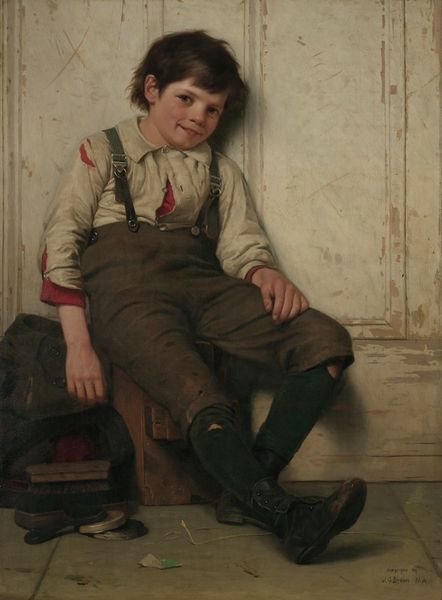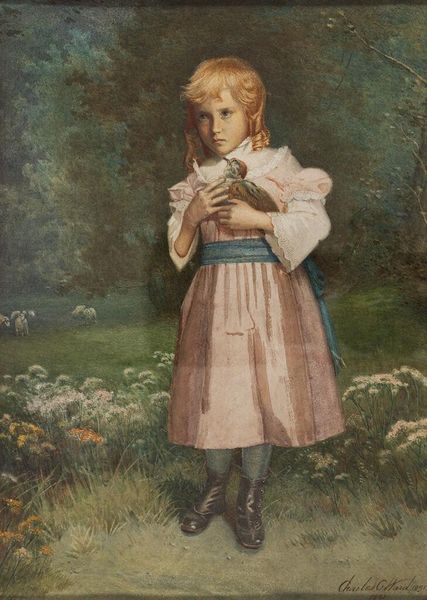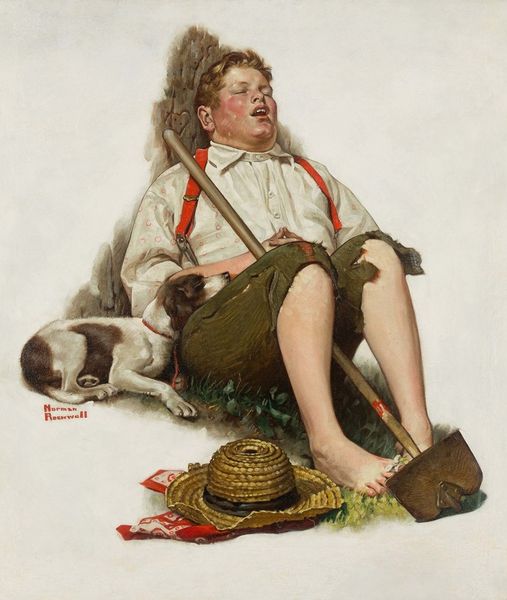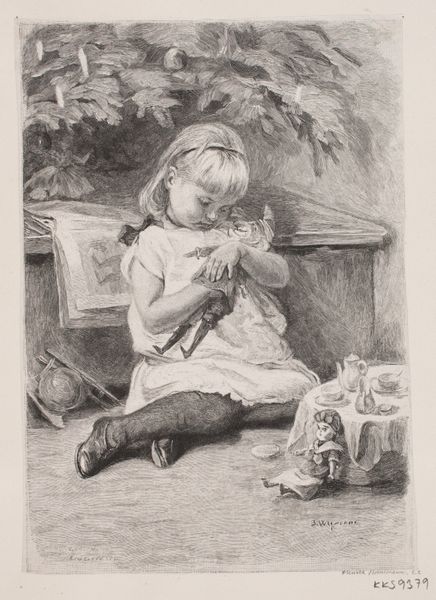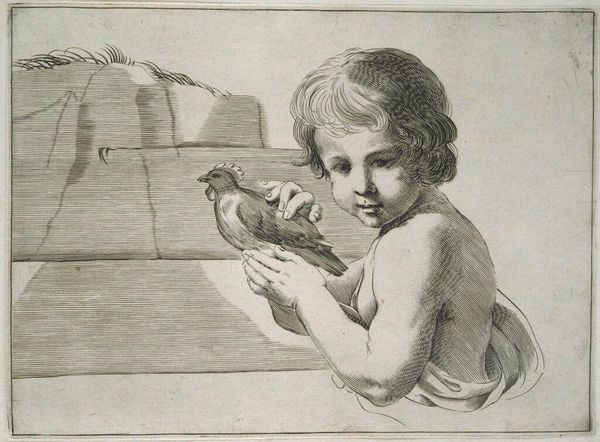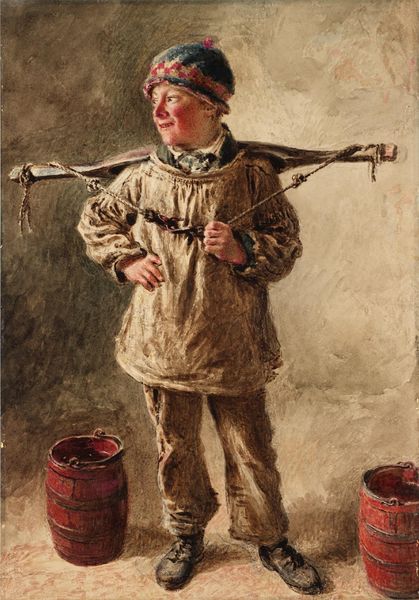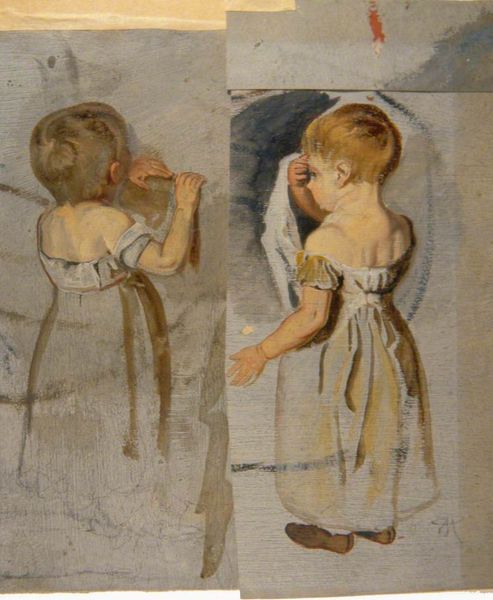
painting, watercolor
#
portrait
#
figurative
#
16_19th-century
#
painting
#
figuration
#
watercolor
#
historical fashion
#
hudson-river-school
#
19th century
#
genre-painting
#
watercolor
#
realism
Copyright: Public Domain: Artvee
Curator: John George Brown's "Pegged Out" captures a young boy holding a tattered boot, seated amidst his cobbling tools. There's a whimsical, almost playful tone to the work. Editor: Immediately, the material reality hits you, doesn't it? The visible mending, the worn leather, speak volumes about labor and its daily presence. Curator: Yes, but consider the figure's pose: the hand to the chin, the contemplative gaze. It invites the viewer to question the boy's thoughts, moving beyond pure representation into the realm of emotional narrative. We see here a keen attention to formal balance. The way the artist employs analogous colors to evoke calmness contributes to an aura of introspection. Editor: I can appreciate the composition, but I see it differently. It highlights the cyclical nature of work and wear. These aren’t just colours; they are evidence of repeated use. The deliberate detail in depicting these tools transforms this from mere genre painting into a meditation on labor and consumption. Note the tools scattered about. Curator: Certainly, these details contribute to a larger narrative, though I resist reducing them to purely utilitarian symbols. Note how the backdrop almost dissolves, the details fade, bringing our attention solely toward this single individual's expression. This isn’t solely about documenting labor, but a study of an individual psyche as well. Editor: For me, it's how the artist engages with class and circumstance through the very texture of the paint. The worn soles, frayed edges are rendered with an attentiveness that transcends aesthetic appreciation and becomes a testament of physical work. These holes in his stockings— the signifiers of labour and poverty —become impossible to ignore Curator: Ultimately, the painting provides a stark example of 19th century realism. It exemplifies art's capacity not only to represent the visible world, but to reveal character and invoke our shared humanity through line, light, and careful structuring of forms. Editor: Perhaps it stands as a reminder to examine not just the image before us, but the hands that crafted and how the final work, from brushstrokes to worn soles, bears witness to life itself.
Comments
No comments
Be the first to comment and join the conversation on the ultimate creative platform.
